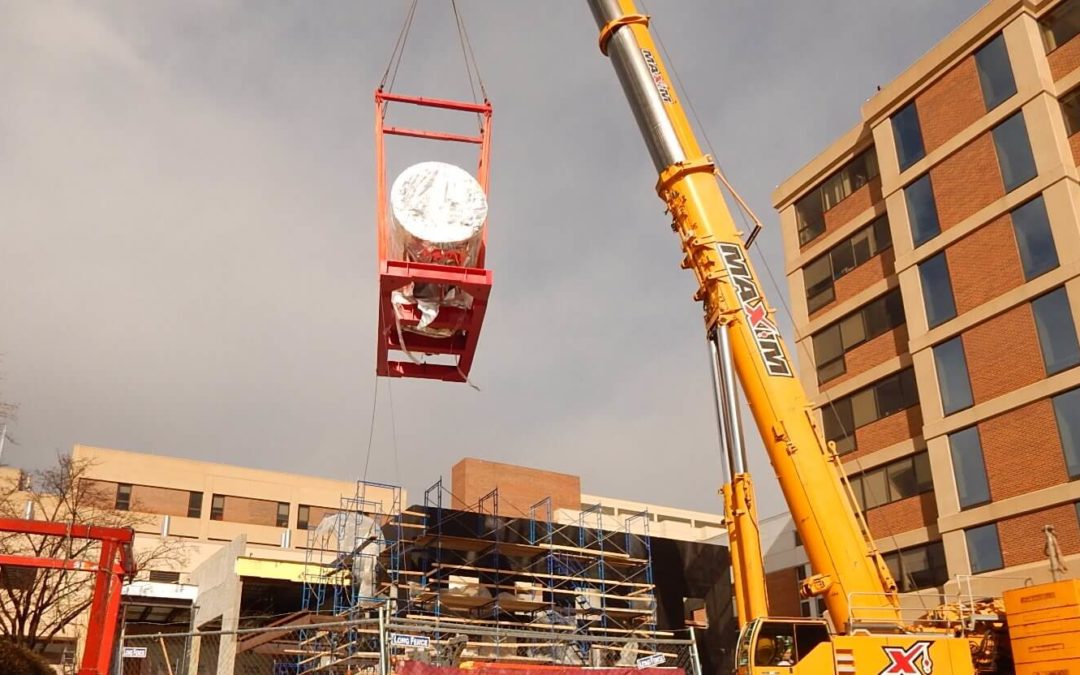Rigging takes place when a large, heavy object needs to be moved using cranes or other material moving machines and is commonplace on construction and industrial sites. There is always the potential for rigging work to become dangerous and cause injury or death if extreme caution and preparation aren’t taken. When done properly rigging allows massive industrial and commercial materials to transition safely from one location to another. However, if there is any complacency or rigging safety checks are ignored, the potential for disaster including injury or death is a strong reality. Today we’ll look at rigging safety procedures and protocols used in the rigging industry to avert injury or disaster.
Rigging Equipment Checks
A successful rigging starts with using the right tools. For jobs were overhead lifts are conducted it’s an absolute necessity to use the right equipment and to inspect it before the actual job is performed. Likewise, it’s crucial to use load-rated hardware made from forged allow steel and that clearly displays the safe working load (SWL). Even if you are observing the correct SWL for your hardware, if it is cracked, missing pieces, has stripped threads, or has wear, this can affect its ability to deliver its full rated capacity.
Once you have all your hardware it then becomes necessary to inspect every piece before the actual rigging and hoisting project. All ropes, chains, slings, shackles, fittings, hooks, and other attachment should be inspected for signs of wear or tear and replaced if they show signs of cracks or stretching, distortion or elongation, or are missing parts. Even with well-maintained equipment, it’s important to never exceed the safe working load and to avoid shock-loading any rigging. Additionally, it imperative to keep rigging equipment away from the work area when not in use.
Lifting Practice Checklist
When setting up to lift a heavy object it is obviously important to find out the load weight before attempting to lift it. Additionally, balancing the load avoids overstressing one sling leg and minimizes the possibility of the load slipping free. Sharp edges should always be padded to prevent the bending of any links. Moreover, avoid splicing by inserting a bolt between two links. When rigging and hoisting, great care should be taken to not jerk the load when lifting or lowering and to keep hands free of “pinch points” where a body part might be crushed. Never force a hook over a link or use homemade connections.
A few other best practices for individuals lifting equipment are to always use a spotter to maintain clearances, always warn nearby workers before moving a load, ensure that landing areas are clear, and always set loads down slowly.
Riggers on the Job
Riggers have a seriously dangerous job and so they must be rigorously trained and qualified on the hazards associated with the job and with proper rigging techniques and equipment. An individual working on a rigging project needs to be able to anticipate issues, stopping if the conditions become unsafe. A Rigger must be fully aware of machinery that is in operation and should also know all the weights and capacities of all materials, machinery, and rigging gear for each project.
Rigging Safety
A strong focus on safety is essential in keeping everyone on a rigging site injury free. At Rowe Transfer, we have decades of combined experience, the right tools, technologies, and equipment, and an engineering staff that can ensure your project is completed efficiently and safely. Contact us today to get your customized rigging quote by calling 865-523-0421 or filing out our online request HERE.

